SRAM’s newest 12-speed groupset, Red eTap AXS, comes with a long list of promises and innovations. It’s meant to be faster, quieter and more efficient, but how do those claims pan out with real-world riding? The only way to find out is to take the new SRAM Red eTap AXS groupset to the streets and put it through its paces.
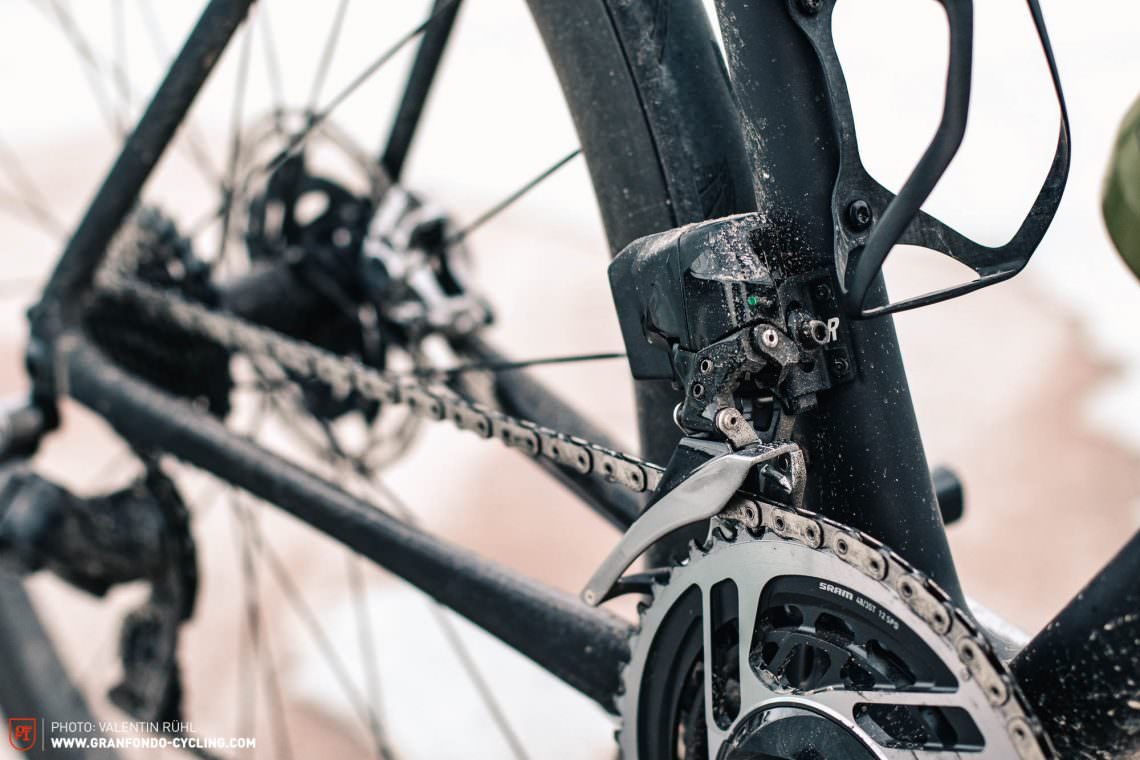
We previously reported on the key specs and details of SRAM’s new eTap AXS groupset at the time of its official launch in mid-February ‒ you can find all the information in our official launch-article. However, in this test, we’re going to focus on the most relevant changes and newest features, plus we also took the group set out on the road to find out how it works with some use and abuse!
Cranks: 48–35 (without power meter)
Cassette: 10–28
Test bike: ROSE X-LITE SIX RED eTap AXS
Price: € 5,999
Bike weight: 7.03 kg
Kilometres ridden: 1,500 km
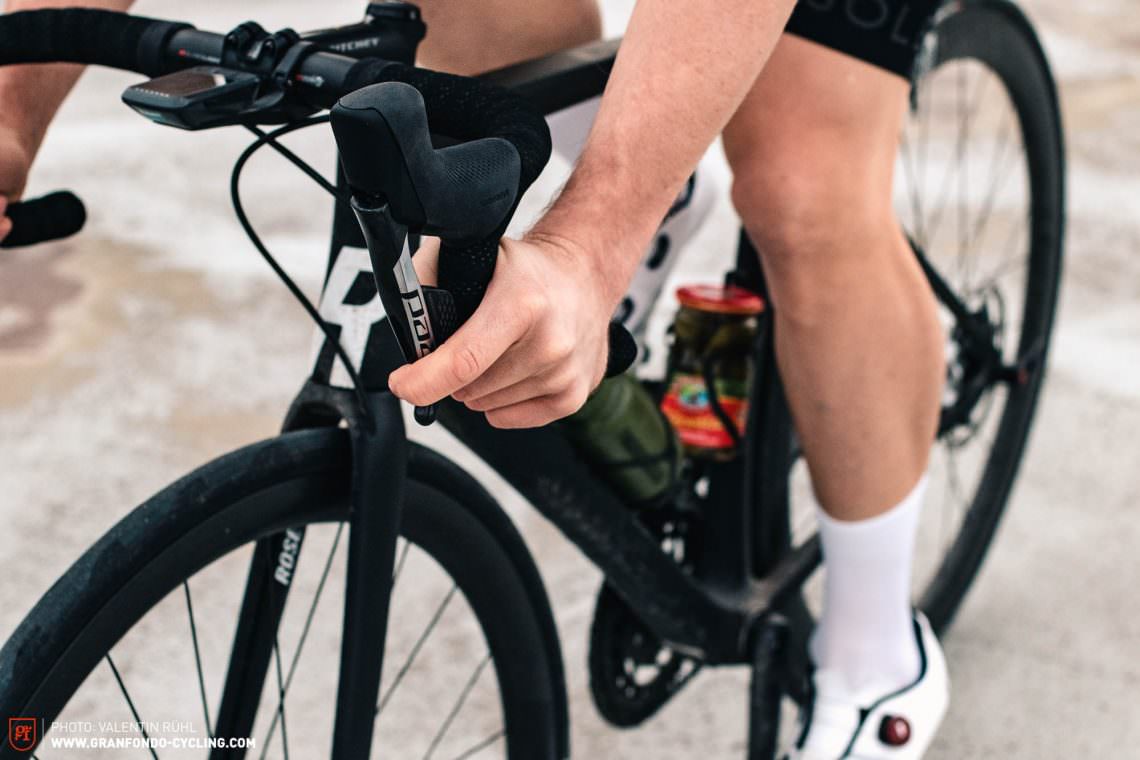
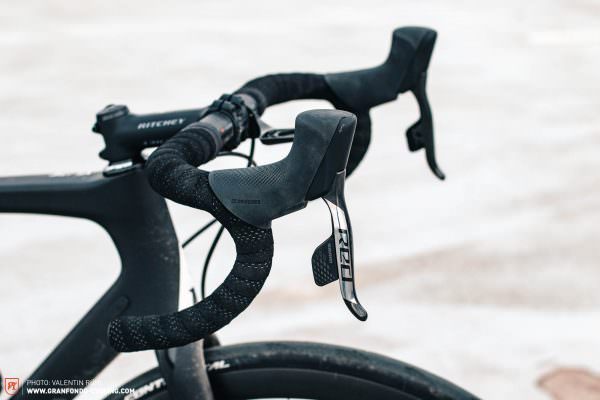
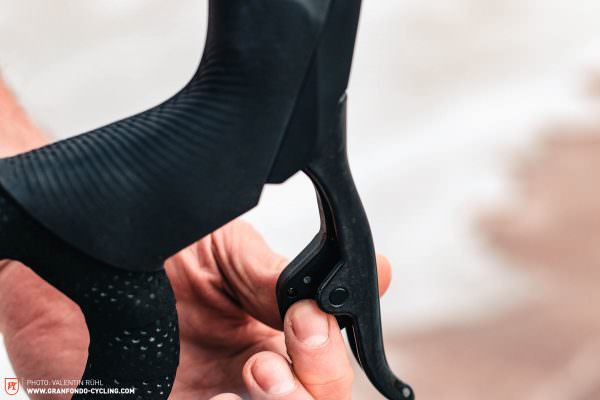
Key features of the SRAM Red eTap AXS
- 12-speed cassette
- Quicker shifting performance
- Wider gear range thanks to 10 t sprocket (up to 330 % with 10-33 t cassette)
- Shifter and shift-logic freely configurable via phone app
- More tire clearance thanks to new front derailleur design
- Newly designed flat top chain for quieter operation, increased strength and longer lifespan
- Two-piece centreline brake rotors for reduced vibrations and better braking performance
- Orbit fluid damper on rear derailleur for road-specific damping
- Improved power meter integration
Shifters and brake levers
Since the shift and brake levers are the first things you lay your hands on, we’ll start there. First off, the shape of the levers hasn’t changed. Compared with Shimano’s hydraulic DURA-ACE version, the levers of SRAM’s new eTap groupset are slightly bigger and chunkier, but still fit nicely into the hand. Especially in a TT position, the hoods provide a firm and secure grip allowing to transfer power to the bike effectively and, even on the tops, the hand sits firmly behind the hoods. This inspires a lot of confidence, especially on fast downhills. Even with bulky winter gloves, the fit is spot on. The revised rubber on the hoods is another welcome update. Compared with previous models, the new rippled texture significantly improves the grip, which is particularly useful if you like riding without gloves.
As far as ergonomics go, we’re really fond of SRAM’s independent grip-width adjustment, which allows you to adjust the position of your brake levers – particularly with brakes, a “one-size fits all” approach isn’t really sufficient. This clever system allows everyone to find their optimal setup, regardless of the size of their hands. We love it!
You’ll also quickly appreciate the updates to the shift paddle. They’re now bigger and feature an anti-slip pattern, making them easier to reach and operate, even with chunky winter gloves. Yes, we’re afraid to say that we’ve been forced to keep on wearing winter gloves, even at the beginning of March!
One more clever feature is the function button on the back of the right-hand shifter, which allows you to switch to a predefined shifting-mode.
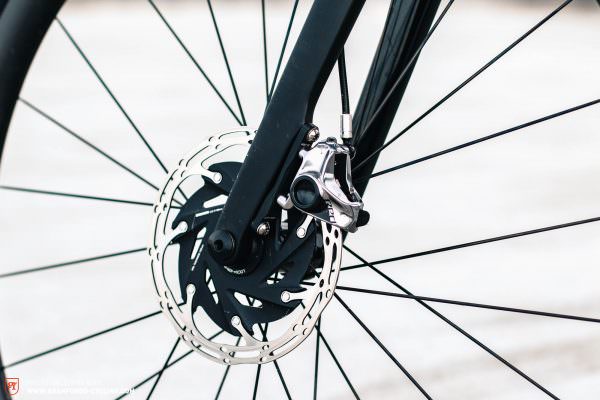
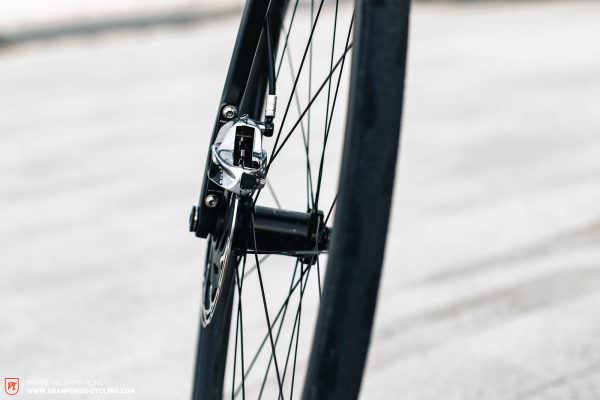
Brakes
If you brake later, you’ll ride faster for longer, or at least that’s the theory. You’ll need brakes that work accordingly though! When we pulled these brakes really hard for the first time, we were impressed with the great bite and good modulation they offer. The main development offered by SRAM are the new two-piece Centerline rotors, which are designed to deliver a quiet, vibration-free braking performance. While the previous single-piece rotor lacked sensitivity, the updated model combines superb braking power with great modulation. The outstanding braking performance invites you to push your limits, allowing you to brake at a later stage, with more confidence and precision.
Among SRAM’s promises is quieter braking performance. As far as we’re concerned, we didn’t hear a single squeal throughout the entire testing session, which is largely thanks to the new rotors. However, we did notice that the eTap AXS brake pads sit fairly close to the rotor. In wet and grimy conditions this could cause the odd bit of brake rub, but so far we haven’t had any problems.



Rear-derailleur
The rear derailleur (and front derailleur) see some major updates for SRAM’s new eTap AXS groupset. Despite providing a wider gear range, the twelve-speed setup also allows for smaller jumps between the sprockets. With a total of seven 1-tooth increments (from the 10 t up to the 17 t sprocket), the cassette on our test bike provides the optimal gearing for every situation, but do (non-pro) weekend-warriors really need this? Taking into account that everyone has their own favourite cadence, such a fine gradation allows you to maintain that exact cadence in pretty much every situation. Not only does this save energy, but, in combination with the huge range of 280% of the cassette on our test bike (and up to 330% range with the 10-33 t cassette), allows you to ride on any terrain… Perhaps you won’t fully exploit this potential on your after-work ride, but it will definitely help mitigate any anxiety the night before a spring classic in the Ardennes or a training camp in the Pyrenees. The following chart illustrates the gear range of SRAM’s new eTap groupset compared with traditional setups.
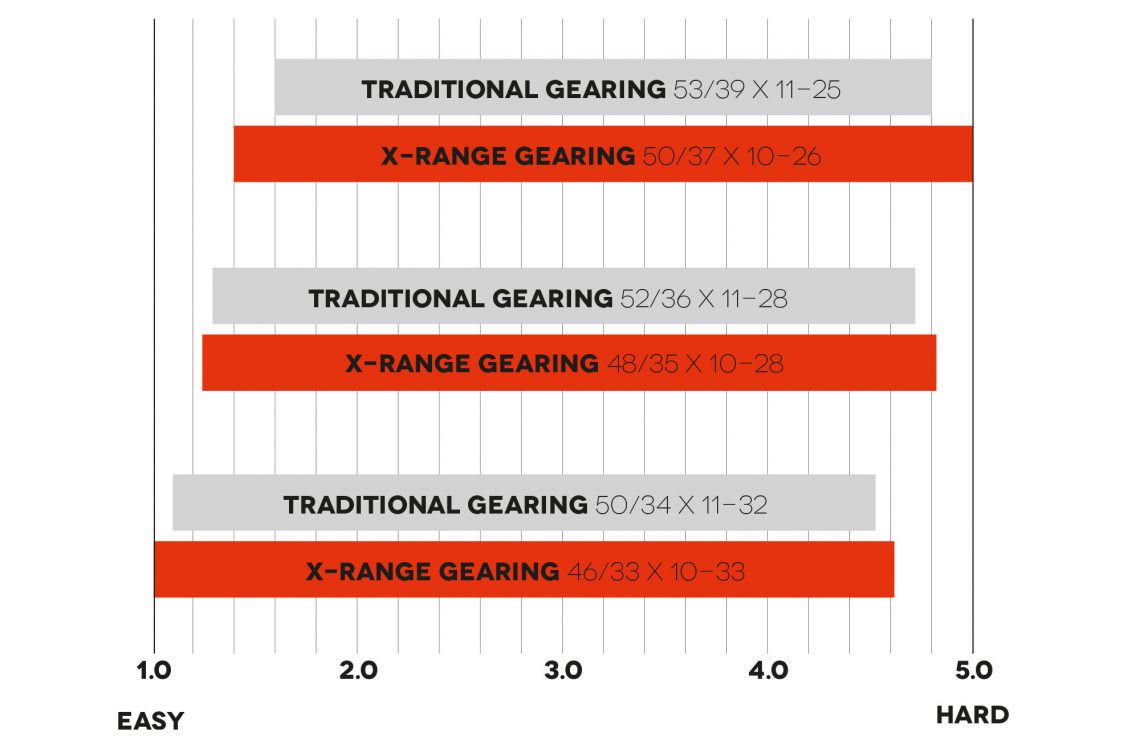
SRAM drastically improved the shift-speed of their new rear-derailleur. The new SRAM eTap AXS shifts incredibly fast, even under load. In fact, it’s so quick that we struggled to determine any differences compared with cable-operated models from the competition. Previous eTap groupsets moved a little slower, the chain now moves precisely across the cassette at the speed of light. SRAM also swapped the old roller bearing clutch with an Orbit Fluid damper. A what? The classic mechanical clutch we know from previous eTap models and MTB-groupsets has been replaced with a new hydraulic damper to meet the specific requirements of road bikes. The clutch is speed-sensitive, which means it won’t dampen the movements caused by gear changes, but only the faster cage rotations caused by bumps. But does it actually work? Oh yes, it works very well indeed! To put the new Orbit Fluid Damper through its paces we looked for properly nasty, rough terrain, à la good-old “spring classics.” And guess what? Not a hint of chain-slap. While the damper eliminates annoying rattling noises, we did find the gear shifts themselves to be much louder than with other rear derailleurs.

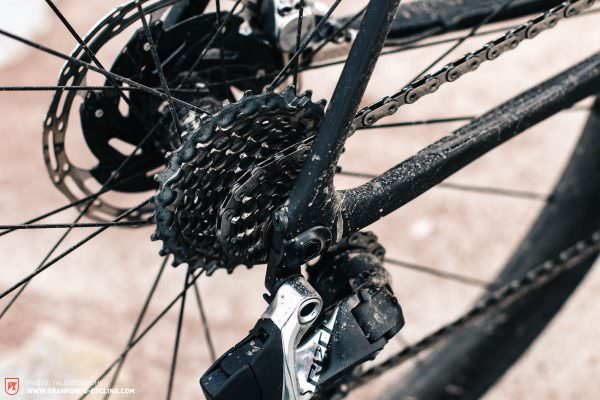
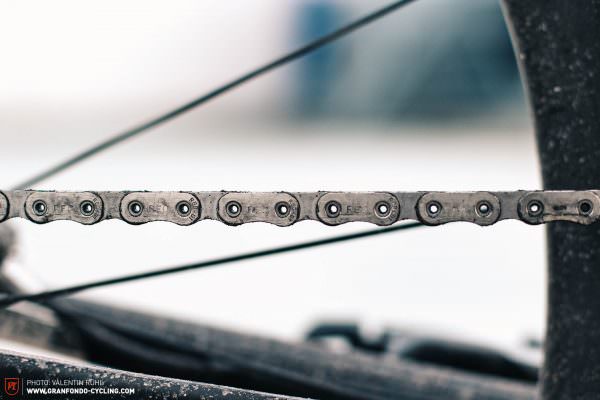
Cassette & chain
Speaking of chains, what’s the new 12-speed cassette/chain combo capable of? SRAM promise a quieter ride with the new chain, but we found that’s only the case as long as the chain runs in a straight line. However, as soon as the chain runs at an extreme angle, things start getting noisy. However this can be avoided by using the right gear selection and shifting strategy and since extreme chain angles will slow you down and increase wear on the chain, it’s generally good practice to keep this in a straight line anyway, regardless of which groupset you’re riding.
All of SRAM´s 12-speed cassettes now start at a 10 t cog which helps maximise the gear range. However, that also means you’ll need a matching XDR freehub. Unfortunately, we’ll have to wait some time before this will be available for all hub models and you may be needing an adapter for your beloved home trainer too.
SRAM also claim that their Hard-Chrome plating technology and flat-top design increase the lifespan of the chain. However, we’re unable to comment on its long-term durability at the moment. Nonetheless, it’s quite evident that a lot has been done to maintain or even improve the durability of 11-speed drivetrains for the latest 12-speed generation.
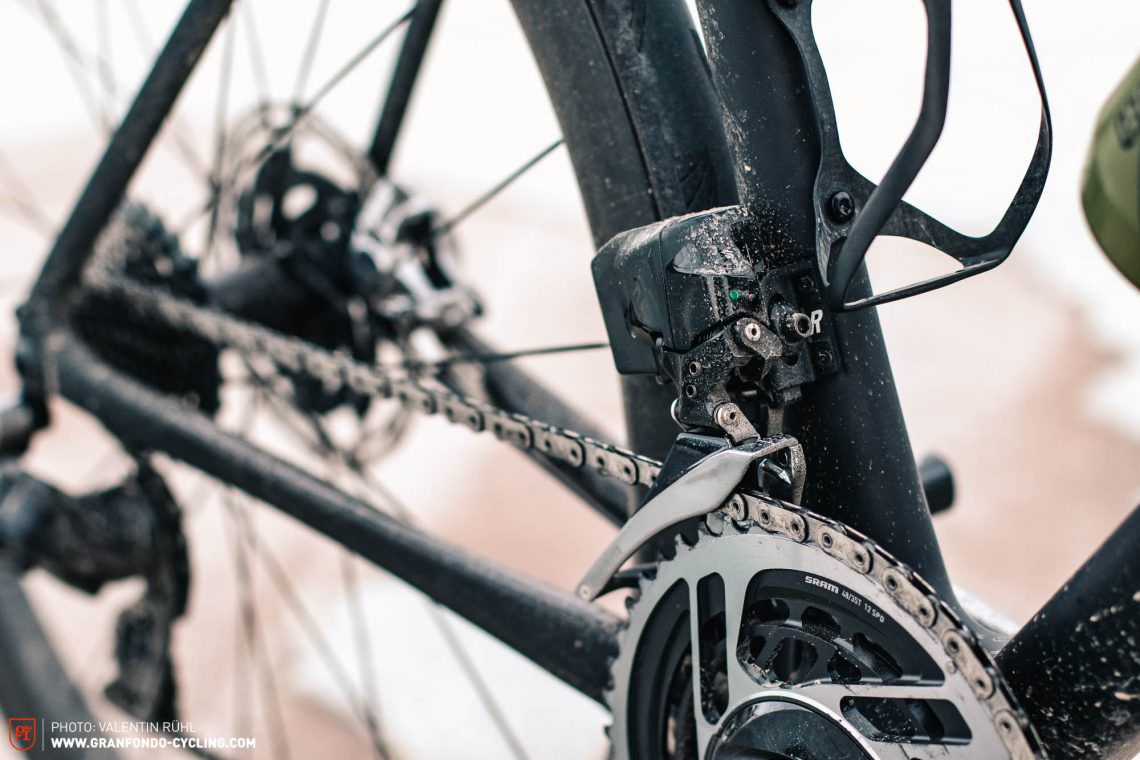
Front derailleur
Just like the rear derailleur, the front derailleur has been entirely overhauled. According to SRAM’s engineers, the redesigned front derailleur offers the quickest shifts on the market and allows for significantly greater tire clearance. That fits perfectly into the current trend of wide tires. The shift between chainrings happens smoothly and quickly, though there is a slight delay between the front derailleur moving and the actual shift. Whilst the shift command is immediately transmitted from the shifter to the derailleur, in some cases the actual gear shift is delayed. Given the outstanding performance of the rear-derailleur, we would expect the front-derailleur to be a lot smoother. Additionally, each gear shift is followed by a loud noise consisting of the electric whirring of the motor and the mechanical movement of the chain.
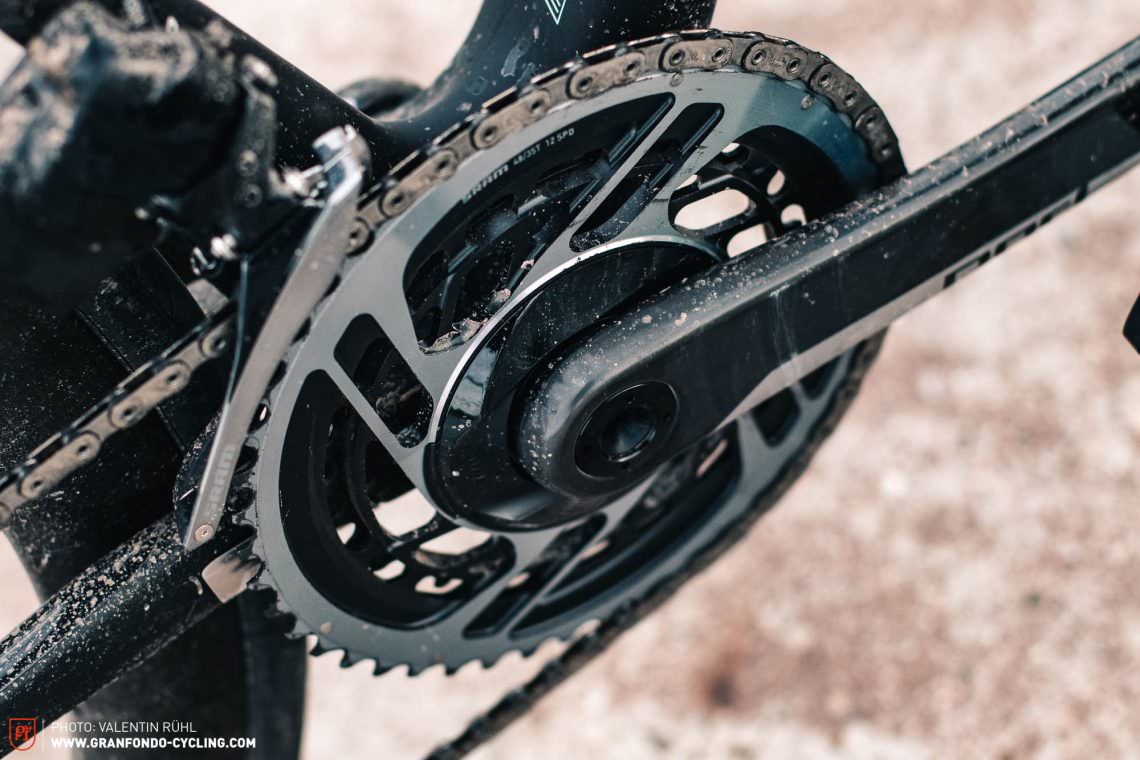
Crankset
The new Red eTap AXS crankset offers some innovations too. The single-piece chainring makes for a significantly stiffer unit. Our test bike was fitted with the 48/35 t chainring which, together with the 10-28 t cassette, represents SRAM’s new semi-compact standard. The new cranks are super-stiff, transmitting power effectively. As far as aesthetics goes, we’re still getting used to the aggressive design. At this point, we can only say you’ll either “love it or loathe it”.
Red eTap AXS is available with a power meter, but the non-power meter version we are using can be upgraded relatively easily. Since the power meter forms one bonded module with the chainrings, you’ll have to replace the entire unit – only the cranks remain untouched. SRAM claim that the new power meter offers two big advantages. It’s more accurate and doesn’t require annoying power meter calibration. On the other hand, this means you’ll have to buy a new power meter every time you want (or have) to change your chainring. The good news is that when you swap your chainring SRAM gives you a 50% discount, which effectively means that you end up paying only a small difference on the price of a non-power meter chainring unit.



AXS smartphone app & shifting-modes
The connection between the SRAM Red eTap AXS groupset and the smartphone app is simple and flawless. The menu navigation is intuitive and the customisation options are almost endless – you can do pretty much everything, from swapping your right and left shifter behaviours to activating a dropper post.
Alongside the conventional shift mode, the eTap AXS groupset provides two optional modes: Sequential and Compensating. The first one is fully automatic and takes care of the shifting in the front. The second one compensates manual chainring shifts with one or two shifts on the rear-derailleur (depending on the configuration) to reduce the gear jump.
If you decide to use either of the optional modes, make sure you enter the right cassette/chainring combination into the app. If you don’t, your shifting performance might suffer.
The only real drawback of this system is the lack of connectivity with other devices (i.e. Garmin or other GPS devices) – by contrast, SRAM’s Japanese rival has been offering customers this option for some time now. Since all interfaces are already available, this should only be a matter of time and we’re curious to see what upgrades SRAM will bring in future.

Efficiency?
Everywhere you look, the industry is pushing high-tech products that are supposed to improve drivetrain performance. In this multitude of products, it’s difficult not to have noticed oversized jockey wheels, such as those offered by CeramicSpeed. These are being used on an increasing number of luxury- and race-bikes. Similarly, if you’re familiar with hour world-records and time trials, you’ve probably noticed the big chainrings combined with large sprockets – a mix that improves the overall efficiency of the drivetrain. We say “bigger is better”. Because larger sprockets allow for less chain wrap and lower rotational speed of the jockey wheels, providing improvements in the efficiency of the drivetrain. Such a degree of optimisation should allow for an improvement of up to 10 watts compared to a traditional setup.
Hence our question: why are SRAM now starting to use small chainrings and 10 t cogs? Even they have exalted bigger jockey wheels as more efficient. While SRAM’s combination won’t affect the average weekend warrior, it could cost a time-trial pro some very precious watts. Ultimately, the break-even point between the improved efficiency of larger sprockets and the weight savings and increased range of smaller cogs is entirely a personal matter.
When it comes to shifting speed, SRAM’s new Red eTap AXS groupset is a real game changer. The American manufacturer combines its superb wireless technology with outstanding connectivity solutions. The new AXS technology leaves lots of room for customisation and individual combinations. With the wide gear range and increased tire clearance, eTap AXS opens up a wide area of applications. A successful concept with a striking design and only a few drawbacks to be aware of.
This article is from GRAN FONDO issue #011
GRAN FONDO Cycling Magazine is published in a digital app format in both English and German. Download the app for iOS or Android to read all articles on your tablet or smartphone. 100% free!

Did you enjoy this article? If so, we would be stoked if you decide to support us with a monthly contribution. By becoming a supporter of GRAN FONDO, you will help secure a sustainable future for high-quality cycling journalism. Click here to learn more.
Words: Photos: Valentin Rühl









